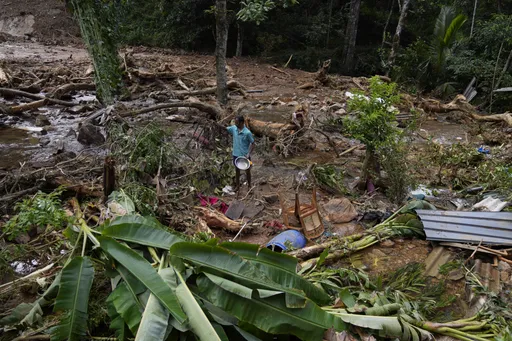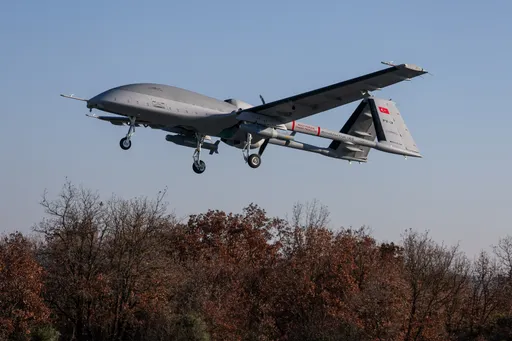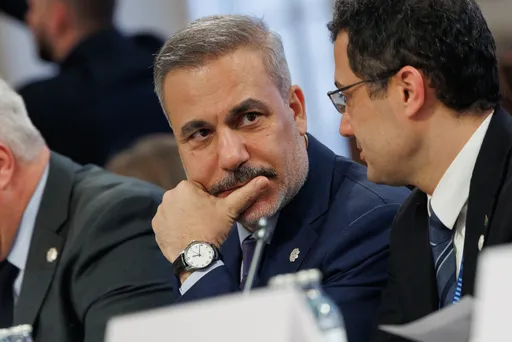A rocket ship built by Elon Musk’s SpaceX company thundered away from Earth with two Americans on Saturday, ushering in a new era of commercial space travel and putting NASA back in the business of launching astronauts from US soil for the first time in nearly a decade.
NASA's Doug Hurley and Bob Behnken rode skyward aboard a sleek, white-and-black, bullet-shaped Dragon capsule on top of a Falcon 9 rocket, lifting off from the same launch pad used to send the Apollo astronauts to the moon a half-century ago. The flight had been delayed three days because of stormy weather in Florida.
"Let's light this candle," Hurley said, borrowing the words used by Alan Shepard on America's first human spaceflight in 1961.
The two men are scheduled to arrive at the International Space Station on Sunday for a stay of up to four months, after which they will return to Earth in a Right Stuff-style splashdown at sea.
The mission unfolded amid the gloom of the coronavirus outbreak, which has killed over 100,000 Americans, and racial unrest across the US over the death of George Floyd, a handcuffed black man, at the hands of Minneapolis police.
NASA officials and others held out hope the flight would would be a morale-booster.
"Maybe there's an opportunity here for America to maybe pause and look up and see a bright, shining moment of hope at what the future looks like, that the United States of America can do extraordinary things even in difficult times," NASA Administrator Jim Bridenstine said before launch.
With the on-time 1922 GMT liftoff, SpaceX, founded by Musk, the Tesla electric-car visionary, became the first private company to launch people toward/into orbit, a feat achieved previously by only three governments: the US, Russia and China.
The flight also ended a nine-year launch drought for NASA, the longest such hiatus in its history. Ever since it retired the space shuttle in 2011, NASA has relied on Russian spaceships launched from Kazakhstan to take US astronauts to and from the space station.
Weather challenges
"We are moving forward with launch today. Weather challenges remain with a 50 percent chance of cancellation," NASA Administrator Bridenstine tweeted.
Wednesday's countdown was halted at just under 17 minutes because of the threat of lightning.
"Falcon/Dragon are designed to withstand multiple lightning strikes, but we don’t think it would be wise to take this risk," tweeted Elon Musk, SpaceX's chief executive and founder.
Hurley and Behnken noted Friday that they endured numerous delays on their space shuttle flights, for both technical and weather reason. Hurley said his first mission was postponed five times over the course of a month. His second mission was NASA's final space shuttle flight in July 2011, the last time astronauts rocketed away from home soil.
President Donald Trump and Vice President Mike Pence planned to return for the second launch attempt. And early Saturday morning, spectators began lining the Banana and Indian rivers in surrounding towns for front-row views.
NASA had tried to discourage spectators because of the coronavirus pandemic, and extremely limited the number of employees, visitors and journalists inside Kennedy Space Center.
NASA hired SpaceX and Boeing in 2014 to taxi astronauts to and from the space station, under contracts totalling $7 billion. Both companies launched their crew capsules last year with test dummies. SpaceX's Dragon aced all of its objectives, while Boeing's Starliner capsule ended up in the wrong orbit and almost was destroyed because of multiple software errors. As a result, the first Starliner flight carrying astronauts isn't expected until next year.
NASA wants to ease its reliance on the Russian Space Agency, the only route for crews to the space station since the retirement of the space shuttles. It's cost NASA billions of dollars for Russian Soyuz seats.
























